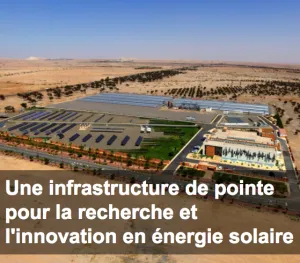OCP’s Green Ammonia pilot plant, and the African Institute for Solar Ammonia
By Trevor Brown on August 17, 2018
Last week, OCP Group announced plans to develop green hydrogen and green ammonia as sustainable raw materials for use in fertilizer production. This includes building pilot plants in both Germany, already under construction, and Morocco, yet to begin construction, as well as “the possible establishment of an African Institute for Solar Ammonia.”
OCP is the world’s largest exporter of phosphate fertilizers, and the Moroccan company controls more than 70% of the world’s known reserves of phosphates. Ammonia is an important input to OCP’s finished fertilizer products, like monoammonium phosphate (MAP) or diammonium phosphate (DAP), and a producer as large as OCP measures its ammonia consumption in millions of tons per year. OCP also has a deep, industry-leading commitment to sustainable development, and it has been investigating potential supply chains for sustainable ammonia for some years.
Now, through its new cooperation agreement with the Fraunhofer Institute for Microstructure of Materials and Systems, in Germany, and its ongoing partnership with the Moroccan Institute for Research in Solar Energy and New Energies (IRESEN), OCP is establishing itself as a leader in the development of green ammonia.
The Memorandum of Understanding provides for continued cooperation with the aim of boosting the use of renewable raw materials in the fertilizer industry. The focus is on two raw materials: Green Hydrogen, which is obtained by electrolysis using electricity from renewable energies, and which can be further processed into numerous products for the fertilizer industry; and Green Ammonia, consisting of Green Hydrogen and nitrogen, which can serve as a raw material for the production of fertilizers, amongst other uses.
OCP announcement, OCP Group and Fraunhofer IMWS sign Memorandum of Understanding for sustainable fertilizer industry, 08/03/2018
Corporate strategy, economic drivers, cost-competitiveness
The announcement quotes Mostafa Terrab, Chairman of OCP, who describes the company’s attitude toward sustainability, saying that “responsibility for the environment has always been important to us, not just when working in our mines, but as a fundamental principle of our circular economy approach. The use of Green Ammonia fits in with this strategy.” Beyond this, Terrab cites the market drivers behind OCP’s investment decision, explaining that the development of technologies for green ammonia production “can help conserve valuable resources and provide our customers with sustainable new products.”
The Director of the Fraunhofer Institute, Ralf Wehrspohn, describes the economic drivers in more detail, emphasizing that these technologies should produce carbon-free ammonia at a competitive cost:
“Green Hydrogen and Green Ammonia offer tremendous potential to sustain the supply of raw materials to the fertilizer industry. They also reduce the industry’s dependency on oil, natural gas and any other fossil fuel. I am pleased that our many activities in the area of Chemistry 4.0 are being perceived internationally, and that we can now continue to advance these technologies with a globally leading company such as OCP, to prove that Green Hydrogen and Green Ammonia can be used on an industrial scale – and at prices that make sense for the companies.”
Fraunhofer IMWS announcement, Fraunhofer IMWS and OCP Group sign Memorandum of Understanding, 08/03/2018
Pilot plants in German and Morocco
In Leuna, Germany, the Fraunhofer Institute is already at an advanced stage of construction with its green hydrogen pilot plant, which is set to begin production in 2019. The pilot will supply green hydrogen to companies in that industrial cluster, which includes BASF, DOMO Caproleuna, Dow, Linde, and Total, among many others.

According to last week’s announcement, this pilot plant technology will now be replicated at IRESEN’s Green Energy Park in Ben Guerir, Morocco, with the addition of an ammonia synthesis unit. And looking to the future, beyond ammonia produced using electrolytic hydrogen, the parties are also looking at technologies for the “electrocatalytical synthesis” of ammonia, as well as the potential for “biotechnological phosphorous modification.”
If OCP enacts these plans, this will be the first green ammonia pilot plant in Africa. Although the continent until recently boasted two industrial-scale commercial green ammonia plants, at Aswan Dam in Egypt and Kwekwe in Zimbabwe, the conflicting economics of natural gas and electricity markets had thwarted both of those hydroelectric projects, and the electrolyzer banks of both plants were shut down over the last few years. Hopefully, this trend can begin to reverse, as OCP and its partners investigate “the possible establishment of an African Institute for Solar Ammonia.”
You can also read the full article at AmmoniaIndustry.com.